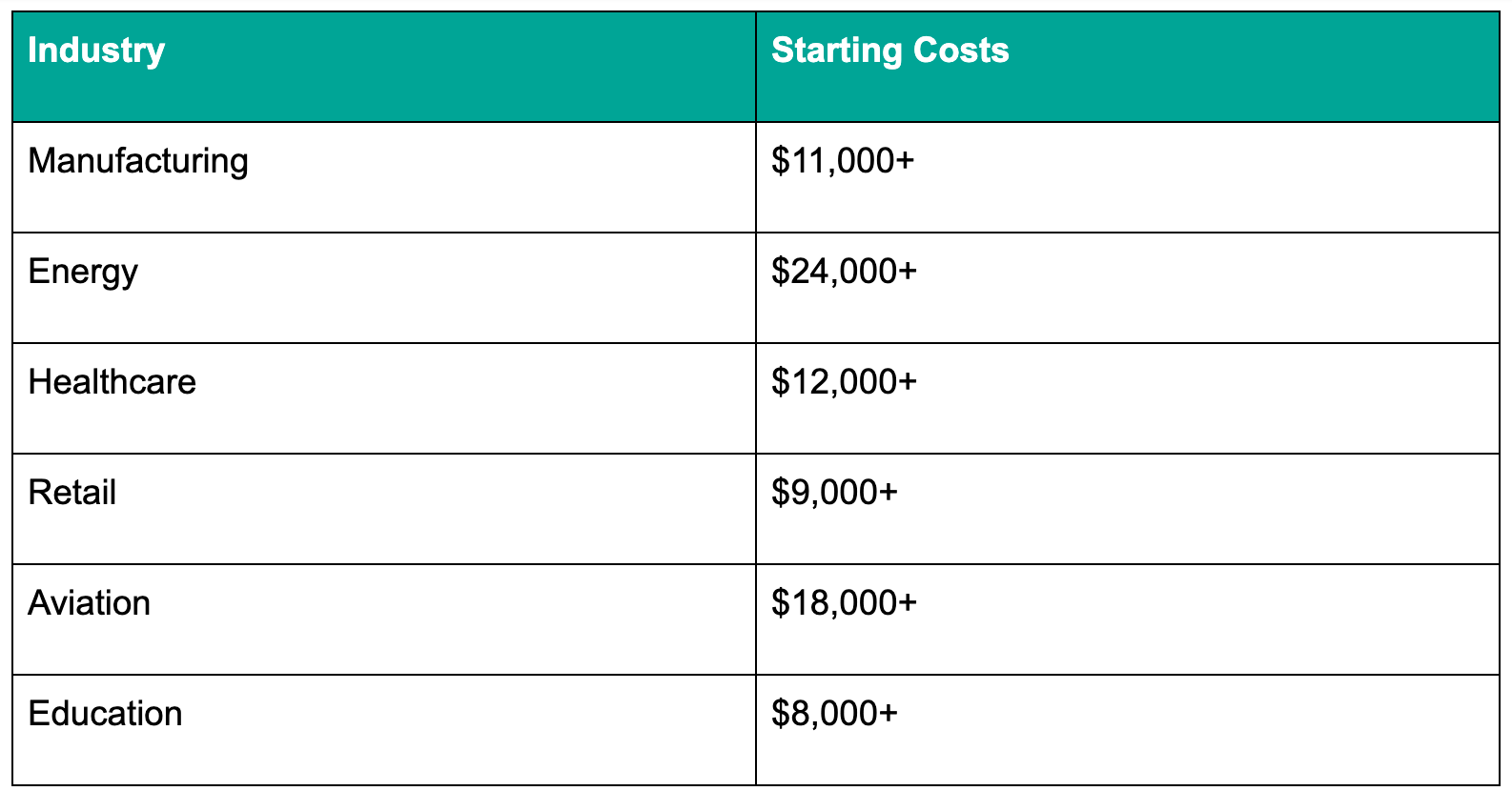INSTANT ON NOW AVAILABLE - Experience Time to first frame as quick as 2 SECONDS
5 Challenges with Employee Training and Today’s Online Learning Programs

Ongoing training and development keeps companies competitive, increases employee retention, and enhances the quality of a company’s products, services, and safety standards.
That said, training and development teams are constantly looking for ways to reach more employees at a lower cost.
Digital learning tools and learning management systems are a start, but the increasing complexity of the evolving world of work has introduced new barriers to quality learning. As a result, training leaders will need creative solutions to these emerging problems.
Today's digital learning is not designed for high skilled, hands-on training
When Deloitte wanted to encourage employees to gain new skills, it rolled out a gamified, learning management system accessible from any devices. They carefully curated content on a number of topics like management, leadership, and digital transformation. The number of users returning each week increased by 37 percent.
While this model works great in industries where training is in the form of PDFs, e-books, and videos, it’s not applicable across all areas. For a driller on an oil rig, an aircraft maintenance technician working on a plane, a soldier in the military, or a surgeon keeping up with the latest medical devices, two-dimensional training materials don’t cut it. They need interactive learning experiences to stay sharp.
Popular 3D training materials are incompatible with a global and mobile workforce
Operator training simulators (OTS) are a training staple in industries like oil & gas and process manufacturing. With simulators, trainees learn main process models and control and safety systems. They also obtain hands-on experience dealing with operations like startups and shutdowns, plant upsets, and emergency situations.
What are the drawbacks of an OTS? They’re expensive. An OTS can cost a company up to $1 million - and for good reason. Considering the role OTSs play in keeping a plant safe and compliant, they aren’t going anywhere anytime soon. However, they create a training bottleneck since employees must be in a dedicated location to receive training or access additional practice to keep their skills sharp.
Read Next: 6 main challenges with interactive 3D applications (and how your company can solve them)
Alternatively, if employees could access a 3D model of these simulators, training would be unleashed from dedicated machines. Companies could accelerate their training and expand their recruitment efforts by streaming interactive, photorealistic training materials directly to individuals’ personal devices wherever they are in the world. When they arrive in the classroom for training with the main OTS, they arrive prepared and spend less time in the classroom as a result.

Table: Starting costs of creating a VR training simulator across industries. (Source)
VR training also doesn’t eliminate travel costs, which is one of the biggest selling points of VR technology. In 2018 alone, U.S. companies spent $29.6 billion on travel, facilities, and equipment for training purposes. VR equipment is usually stored in a dedicated location, meaning there are still travel costs associated with this training technology.
Finally, VR makes a lot of people ill, limiting the number of employees who can use it for training. Presently, about 40 to 70 percent of VR users feel motion sickness while using the technology.
Related read: Does photo-real 3D for business need VR or real-time mobile access?
All of this adds up to a frustrating situation for training executives who want to use VR as a panacea for their digital training challenges.
Interactive 3D content is too data-intensive to stream through the cloud
Remote working has become popular among both employees and employers. Employees benefit from flexibility, autonomy, and greater productivity by working where they feel they perform best.
Employers also benefit from enhanced productivity. But they also benefit in the form of higher employee retention rates, a more engaged workforce, and reduced spending on office space.
In addition, more and more employees are working in bring-your-own-device (BYOB) environments. Or they are logging in remotely from home. That said, while a Deloitte employee can access new training materials to brush up on their skills from their couch, a medical technician or oil rig worker cannot.
For these workers, data-intensive 3D files are difficult to stream through the cloud without a purpose-built platform.
Learning and development teams need access to niche creative and technical talent
Creating interactive, photorealistic 3D content requires the use of game engines. Game engines bring a physical engine, graphics engine, and AI engine all into one platform, streamlining workflows and saving developers the trouble of reinventing the wheel to use popular 3D features.
Unfortunately, there’s a supply shortage. The demand for employees with real-time 3D skills has grown 601 percent faster than the job market overall. The good news is that interactive 3D content creation agencies and visualization firms spotted this trend early and have hired for these skills. So companies that want to access this talent can collaborate with these agencies to source the interactive 3D training content they need.
ICYMI: Top online resources for creating real-time 3D simulations with Unreal Engine or Unity
These digital training challenges are not without solutions
Fortunately, most of these digital training challenges have a solution. The need for high fidelity 3D content sharing has become business critical, particularly for employee training and development. There are tools, methodologies, and platforms, like PureWeb’s fully-managed service, to help companies roll out their enterprise-wide training programs leveraging interactive and photorealistic 3D simulation games streamed to any employee's device, anywhere in the world.
Learn more about tackling today’s digital learning challenges with interactive 3D modules. Download our latest white paper How real-time 3D simulators supercharge online training for a mobile workforce.


